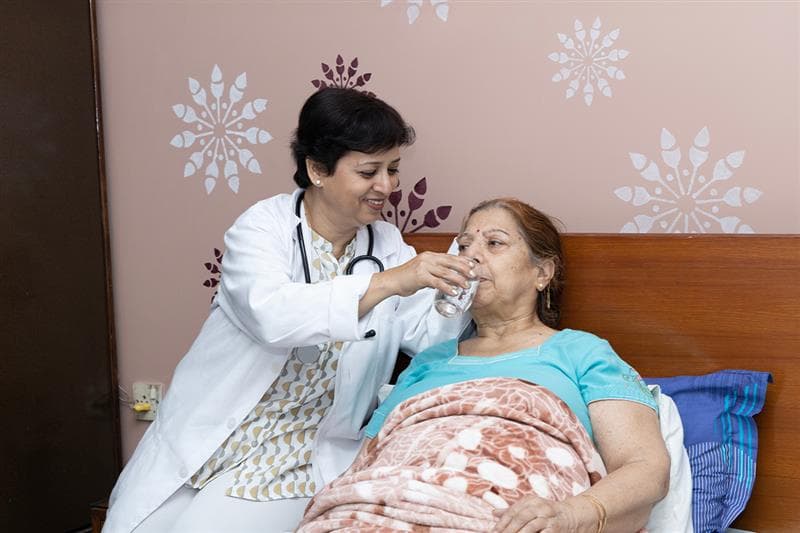
Loading...

Loading...
2025-07-03
Antara
Millions of people start their healing experience with open heart surgery recovery each year. This is a major medical procedure that needs careful attention and proper care after surgery.

Patients stay in the hospital for 5-7 days after their open heart surgery. However, complete recovery takes six to twelve weeks. The first 6 to 8 weeks are important. Proper wound care and effective management of post-surgery discomfort during this time make a big difference. Open surgical procedures need longer healing times. Minimally invasive surgeries let patients go home after one night, and they recover at home in about a month.
Pain management and emotional well-being play key roles in successful recovery. Patients usually attend three cardiac rehabilitation sessions weekly for three months. These rehab sessions help you rebuild strength and confidence. Although physical healing is important—so is caring for your mind. Mood swings, anxiety, and depression often affect patients after surgery.
This blog guides you through each stage of home recovery with effective advice for patients and caregivers. A clear understanding of the recovery path helps create a supportive environment. This leads to better healing and return to daily activities.
The recovery trip starts in the intensive care unit (ICU). A specialized surgical team watches patients' vital signs after surgery. These include cardiac specialists, respiratory therapists, and nurses. Several monitoring devices track vital signs. These include intravenous lines, arterial lines for blood pressure, temporary pacemakers, chest tubes for fluid drainage, and urinary catheters. Patients stay connected to a ventilator for 4-6 hours after surgery. The core team works to stabilise vital signs. They make sure patients are awake and alert and start checking their overall condition.
Patients move to intermediate care after 2-3 days. They start physical therapy with supervised walking three to four times daily. Breathing exercises are vital. Patients use an incentive spirometer ten times every hour while awake.
Pain management is a significant part despite some lasting discomfort. Most patients get ready for discharge by day five. The hospital stay for standard open-heart surgery usually lasts 5-7 days.
You will see a temporary drop in hunger during recovery. Small, frequent meals with protein help the body heal.
Light activities support recovery without straining your heart. These include chess, card games, reading books, and gentle walking.
Cardiac rehabilitation begins in this period. Patients usually attend up to three sessions per week for the next three months.
Patients can walk 1-1.5 miles daily during this period. They can start driving again with their surgeon's approval. Patients might feel some emotional turbulence. These include mood swings, anxiety, and depression. A regular daily routine helps build strength and speeds up recovery.
The medical team checks your healing progress regularly. The team will monitor weight, temperature, and incision sites for signs of infection. Custom rehabilitation programmes focus on patient's personal goals. This approach substantially improves their quality of life.
Recovery from open heart surgery is a challenge that tests patients both physically and emotionally. The trip begins with intensive care monitoring. It moves through careful pain management and ends up with renewed strength and independence. Patients handle the healing process better when they understand each recovery phase.
Care home staff's support becomes crucial during this vulnerable time. Their expertise helps patients with breathing exercises, gradual mobility increases, and proper wound care.
Family plays a big hand during rehabilitation. Loved ones not only boost spirits in tough moments but also share the joy of small wins along the way. Their presence reminds patients why they went through surgery - to spend more quality time together.
Cardiac rehabilitation programmes are a great way to get extra support. These well-laid-out programmes help patients build strength safely and connect with others who face similar challenges. People often form lasting friendships with others who understand their situation.
Life after heart surgery is different from before. Most patients get back to their daily activities with a fresh outlook on health. The road to recovery is challenging but helps patients rebuild their physical strength and gives them a new view of what really matters.
The care home day starts with staff checking vital signs and giving medications. Breathing exercises become a significant part of recovery. Patients use an incentive spirometer ten times every hour while awake. Physical therapy happens three to four times daily. The staff helps patients start walking. The day alternates between rest periods and gentle activities. Nurses provide personal care support at first and encourage patients to become more independent as they regain strength.
Recovery takes six to twelve weeks for most patients, based on their health condition. Seniors stay in the hospital for 5-7 days before moving to a care home. A complete recovery typically takes 2-3 months. Office workers can return to work in about six weeks. People with physically demanding jobs might need three months before they can go back.
Patient activities expand as healing progresses:
Patients should not lift anything over 10 pounds for at least eight weeks.
The care home team checks blood pressure, heart rate, oxygen saturation, and symptoms like chest pain or dizziness each day. They watch for changes in vital signs and monitor breathing difficulties or swelling. Weight changes get special attention because they might show fluid retention. The team ensures proper medication intake and adjusts treatment based on how patients respond.
Most seniors return to their regular routines by week eight after surgery. Their physical strength and stamina improve substantially through cardiac rehabilitation programmes. Daily walking distances grow to 1-1.5 miles. Social activities fully resume within three months. This includes light recreational activities like dancing or golfing with a power cart.

Please fill in the form and submit the details to request an appointment.